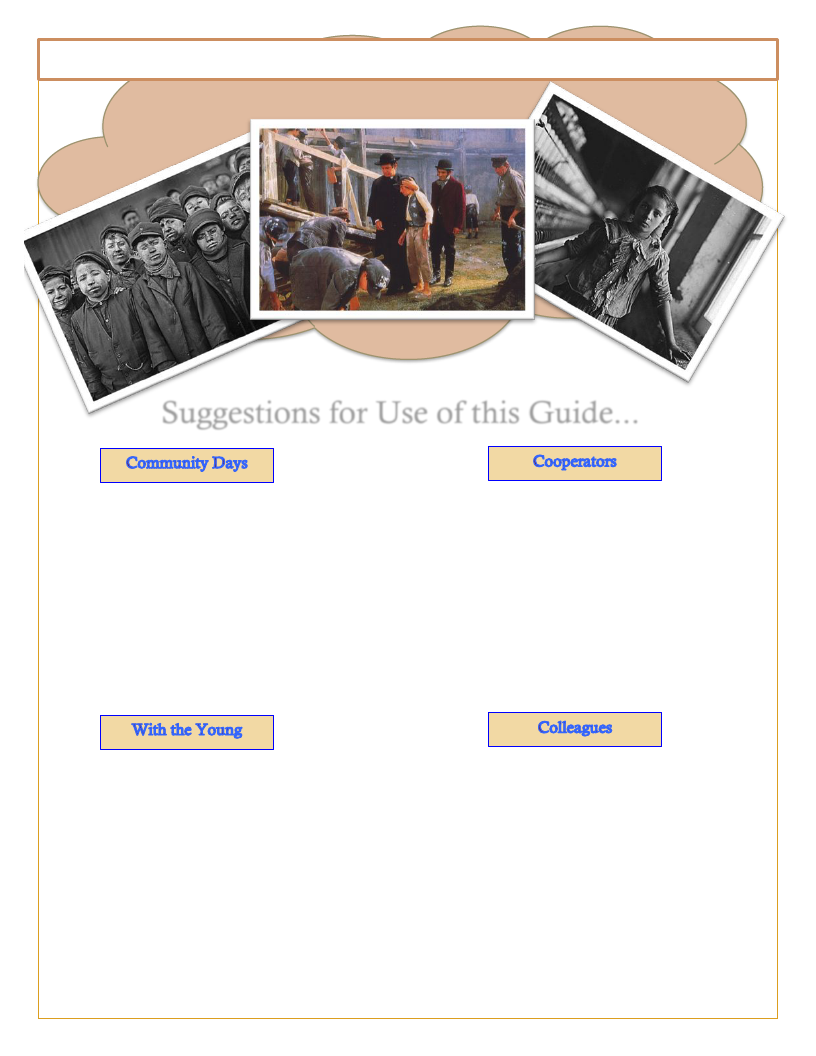
12
GeTttHinEg tLoOKRnEoMw DIPoSnUBMosSco
January 2012 Study Guide
Institute of SalesiWanINSpTirEitRua2l0it1y6
ordinary revolution of human affairs. Happily, there
are schools in these prisons now. If any readers doubt
how ignorant the children are, let them visit those
schools and see them at their tasks, and hear how
much they knew when they were sent there. If they
would know the produce of this seed, let them see a
class of men and boys together, at their books (as I
have seen them in the House of Correction for this
county of Middlesex), and mark how painfully the full
grown felons toil at the very shape and form of letters;
their ignorance being so confirmed and solid. The
contrast of this labour in the men, with the less
blunted quickness of the boys; the latent shame and
sense of degradation struggling through their dull
attempts at infant lessons; and the universal eagerness
to learn, impress me, in this passing retrospect, more
painfully than I can tell.
For the instruction, and as a first step in the
reformation, of such unhappy beings, the Ragged
Schools were founded. I was first attracted to the
subject, and indeed was first made conscious of their
existence, about two years ago, or more, by seeing an
advertisement in the papers dated from West Street,
Saffron Hill, stating "That a room had been opened
and supported in that wretched neighbourhood for
upwards of twelve months, where religious instruction
had been imparted to the poor", and explaining in a
few words what was meant by Ragged Schools as a
generic term, including, then, four or five similar
places of instruction. I wrote to the masters of this
particular school to make some further inquiries, and
went myself soon afterwards.
It was a hot summer night; and the air of Field
Lane and Saffron Hill was not improved by such
weather, nor were the people in those streets very
sober or honest company. Being unacquainted with
the exact locality of the school, I was fain to make
some inquiries about it. These were very jocosely
received in general; but everybody knew where it was,
and gave the right direction to it. The prevailing idea
among the loungers (the greater part of them the very
sweepings of the streets and station houses) seemed to
be, that the teachers were quixotic, and the school
upon the whole "a lark". But there was certainly a
kind of rough respect for the intention, and (as I have
said) nobody denied the school or its whereabouts, or
refused assistance in directing to it.
It consisted at that time of either two or three--
I forget which-miserable rooms, upstairs in a
miserable house. In the best of these, the pupils in
the female school were being taught to read and
write; and though there were among the number,
many wretched creatures steeped in degradation
to the lips, they were tolerably quiet, and listened
with apparent earnestness and patience to their
instructors. The appearance of this room was sad
and melancholy, of course--how could it be
otherwise!--but, on the whole, encouraging.
The close, low chamber at the back, in
which the boys were crowded, was so foul and
stifling as to be, at first, almost insupportable. But
its moral aspect was so far worse than its
physical, that this was soon forgotten. Huddled
together on a bench about the room, and shown
out by some flaring candles stuck against the
walls, were a crowd of boys, varying from mere
infants to young men; sellers of fruit, herbs,
lucifer-matches, flints; sleepers under the dry
arches of bridges; young thieves and beggars--
with nothing natural to youth about them: with
nothing frank, ingenuous, or pleasant in their
faces; low-browed, vicious, cunning, wicked;
abandoned of all help but this; speeding
downward to destruction; and UNUTTERABLY
IGNORANT.
This, Reader, was one room as full as it
could hold; but these were only grains in sample
of a Multitude that are perpetually sifting through
these schools; in sample of a Multitude who had
within them once, and perhaps have now, the
elements of men as good as you or I, and maybe
infinitely better; in sample of a Multitude among
whose doomed and sinful ranks (oh, think of this,
and think of them!) the child of any man upon
this earth, however lofty his degree, must, as by
Destiny and Fate, be found, if, at its birth, it were
consigned to such an infancy and nurture, as
these fallen creatures had!
This was the Class I saw at the Ragged
School. They could not be trusted with books;
they could only be instructed orally; they were
difficult of reduction to anything like attention,
obedience, or decent behaviour; their benighted
ignorance in reference to the Deity, or to any
social duty (how could they guess at any social
duty, being so discarded by all social teachers but
the gaoler and the hangman!) was terrible to see.
Yet, even here, and among these, something had
11






























